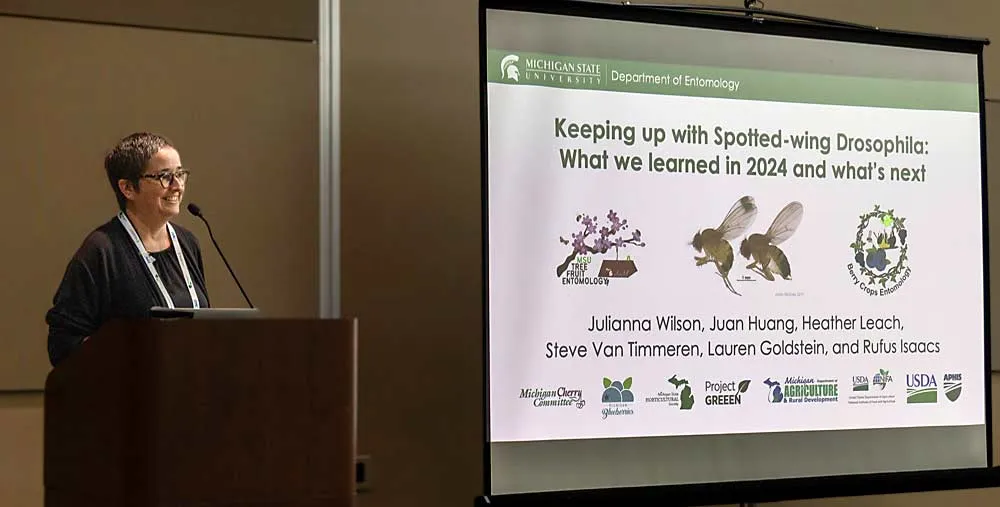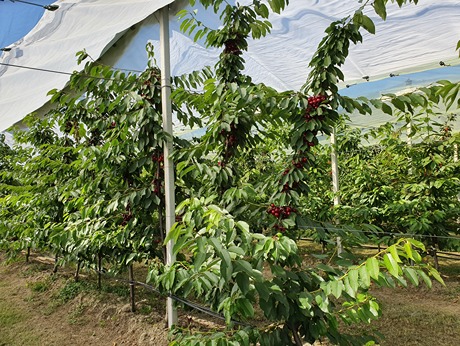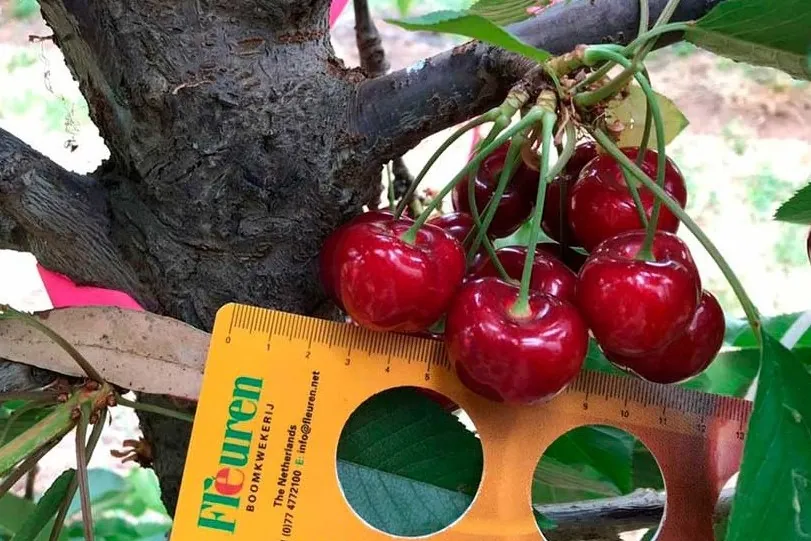Julianna Wilson had many stories to tell about the spotted-wing drosophila, the invasive fruit fly that has become one of the main pests of berries and cherries in North America, when she spoke at the 2024 Great Lakes Fruit, Vegetable and Farm Market EXPO in December.
The first story from the Michigan State University entomologist focused on two biocontrol agents, the samba wasp and the ronin wasp, and their potential to manage SWD populations. The other was the story of two years, 2023 and 2024, and the climatic differences in Michigan that led to low SWD infestation in the first year and high infestation in the second.
Biocontrols
The samba wasp (Ganaspis brasiliensis) and the ronin wasp (Leptopilina japonica) are both native to Asia, where they parasitize SWD. The wasps have followed the fruit fly to North America and are beginning to establish populations in the United States.
Both wasps parasitize SWD by laying their eggs inside SWD larvae that develop within fruit. The wasp larvae allow SWD larvae to develop into pupae, then consume the SWD, using the pupal case to protect themselves as they develop into adults, Wilson said.
In 2022, no samba wasps were recovered, but the following year, 37,000 wasps were released across 30 sites, and wasps were recovered at five of them (none of which, however, were cherry sites).
In 2024, SWD infestation was “horrible” in Michigan, Wilson said, but researchers hoped that the silver lining was a greater establishment of the pest’s natural enemies. That year, they released more samba wasps, though in fewer sites. As of December 11, no samba wasps had been recovered, but samples were still being analyzed. Samples from the ronin wasp release sites were also still under analysis, and wasps had already been found at two of the 14 cherry sites.
 Image 1: Julianna Wilson during the Great Lakes Fruit, Vegetable and Farm Market EXPO in December.
Image 1: Julianna Wilson during the Great Lakes Fruit, Vegetable and Farm Market EXPO in December.
The role of climate
Michigan experienced very low SWD infestation in 2023. SWD populations began to increase only in late July of that year, well after the start of the cherry and blueberry harvest. In 2024, however, SWD presence in fields was already abundant by late June and contributed to the poor quality of Michigan’s cherry harvest last year.
Why this difference? First, 2023 had more days below 41 degrees Fahrenheit (5°C) (SWD activity threshold) than 2024, which delayed the pest population’s development. According to Wilson, greater precipitation in 2024 likely also increased SWD populations that year.
This difference made Wilson reflect: Is it possible to use winter temperatures and spring rainfall to predict SWD populations for the next season? And can this prediction be used to guide spraying decisions? Perhaps growers can apply fewer sprays in low-risk years.
Any chance to use fewer insecticides could help avoid the looming threat of insecticide resistance by SWD. California researchers are beginning to find evidence of pyrethroid resistance in SWD populations, as well as resistance to organophosphates and spinosad. Researchers at the University of Michigan have not yet detected SWD resistance in Michigan, but the genetic potential is there and could start to manifest with heavy insecticide use over time, Wilson said.
The “attract-and-kill” technology—a bait station placed at the start of the season that kills many SWD before they begin to damage fruit, for example—offers another potential alternative, but it has been challenging to find a bait or odor source strong enough to overcome SWD’s desire to lay eggs in fruit. With financial assistance from the U.S. Department of Agriculture, Wilson’s lab is studying yeast-based, species-specific insecticides that could be combined with known attractants to be more enticing to SWD.
Read the full article: Good Fruit Grower
Images: Good Fruit Grower; FEM
Matt Milkovich
Good Fruit Grower
Cherry Times - All rights reserved













